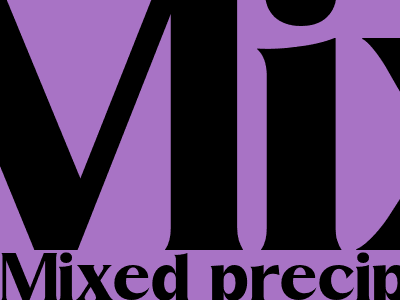
Mixed Precipitation: What It Is and When to Expect It
What is Mixed Precipitation?
Mixed precipitation is a term used to describe when two or more types of precipitation occur at the same time. The most common types of mixed precipitation are rain and snow, but it can also include sleet, hail, or freezing rain.
Mixed precipitation forms when there is a layer of warm air above a layer of cold air. The warm air causes the precipitation to start as rain, but as it falls through the cold air, it freezes and turns into snow, sleet, or hail.
When to Expect Mixed Precipitation
Mixed precipitation is most likely to occur in the spring and fall, when the temperatures are fluctuating. It can also occur in the winter, if there is a warm front moving through.
If you are expecting mixed precipitation, be sure to dress warmly and allow extra time for travel. Mixed precipitation can make roads slippery and dangerous.
Types of Mixed Precipitation
Rain and Snow
Rain and snow is the most common type of mixed precipitation. It occurs when the temperature is close to freezing, and there is a layer of warm air above a layer of cold air.
The rain will start as rain, but as it falls through the cold air, it will turn into snow. The snow will then mix with the rain, creating a slushy mess.
Sleet
Sleet is a type of mixed precipitation that occurs when raindrops freeze before they reach the ground. Sleet is often mistaken for snow, but it is actually harder and more compact.
Sleet can be dangerous, as it can make roads slippery and icy. It can also damage trees and power lines.
Hail
Hail is a type of mixed precipitation that occurs when raindrops freeze inside a cloud and then fall to the ground. Hail can be small or large, and it can cause damage to property and crops.
Hail is most common in the summer, when the temperatures are warm and there is a lot of moisture in the air.
Freezing Rain
Freezing rain is a type of mixed precipitation that occurs when raindrops freeze on contact with a cold surface. Freezing rain can make roads and sidewalks extremely slippery and dangerous.
Freezing rain is most common in the winter, when the temperatures are below freezing.
Conclusion
Mixed precipitation is a common weather phenomenon that can occur in all four seasons. It is important to be aware of the different types of mixed precipitation and to take precautions when it is expected.